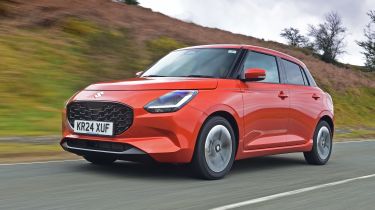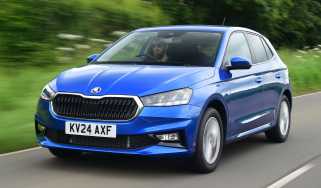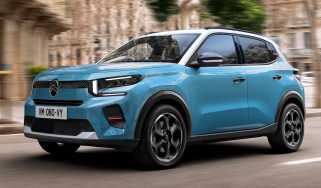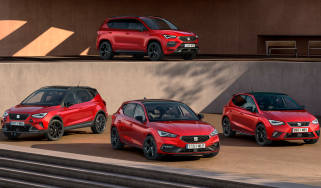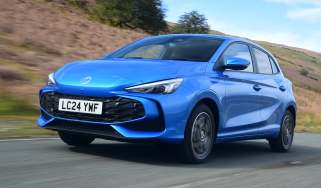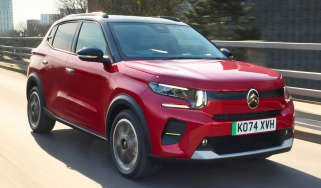Suzuki Swift review – an affordable mild-hybrid supermini
The Suzuki Swift offers affordable mild-hybrid motoring, and lots of equipment for the price
Pros
- Very economical
- Cheap and great value
- Comfortable
Cons
- Small boot
- Cheap interior plastics
- Noisy engine when accelerating
Verdict – is the Suzuki Swift a good car?
The latest Suzuki Swift hasn’t changed dramatically compared with the outgoing model, and offers even better fuel economy thanks to mild-hybrid tech, an improved – if already outdated – infotainment system, lots of equipment as standard and during testing we found it to be fairly comfortable, too. The boot isn’t particularly big, though, and cheap interior plastics make it feel very budget-focused. The problem is, it’s crept up in price since launch, and while there’s only a few hundred pounds in it, that makes it more expensive than a hybrid MG3, petrol Vauxhall Corsa or Renault Clio.
Suzuki Swift models, specs and alternatives
Modern cars can feel rather complicated, expensive and chock full of features you don’t necessarily want or need. The Suzuki Swift supermini feels like a breath of fresh air in that sense, and delivers if you value simplicity.
Suzuki is a brand known for its focus on small, affordable cars, and the Suzuki Swift is one of its longest-standing and best-known models. Low running costs and a cheap list price – features that matter to buyers of small cars and superminis – are the focus here, but somehow the Swift has never quite managed to become a household name like the Renault Clio or Vauxhall Corsa do in the UK.
More reviews
There’s now a glaring problem, though – while the Swift was cheaper than the Corsa when it launched, it’s crept up slightly in price and is actually now around £500 more expensive. Other rivals have also arrived, such as the MG3, which is cheaper than them both, and features a fully-hybrid setup with more power.
There haven’t been any major overhauls for the Suzuki Swift this time – instead, the brand has kept the same underpinnings as before and tweaked the styling, while switching the engine for something more economical. The supermini market is a shrinking one, so Suzuki is hoping by focusing on these attributes, the Swift will make an even stronger case for itself.
The Swift’s styling now features smaller headlights and tail-lights that get a smoky finish, with Suzuki trying to give it a slightly cuter face. The jury’s out on whether it channels as much charm as a MINI, though. There’s also a new clamshell bonnet with a seam that comes lower that’s reminiscent of a Fiat 500, and the previous model’s door handles, which were hidden in the rearmost pillar, have been swapped for more conventional items on the doors themselves.
As with the last car, the current Suzuki Swift comes with a mild-hybrid system fitted as standard, but while the combustion engine is the same size as before at 1.2 litres, it’s now a three-cylinder, rather than a four-cylinder. That’s enabled Suzuki to make the Swift even more economical. Although the 82bhp power figure is unchanged, there’s improved grunt lower down in the rev range.
In terms of trims, the Suzuki Swift is offered in entry-level Motion – which the company reckons will prove more popular in the UK – and higher-spec Ultra. This is probably a decent call, as Ultra doesn’t seem to offer much more in the way of equipment, and yet costs around £1,100 extra. At just over £19,000, the Swift is more expensive than at launch, and is actually now more expensive than some key rivals, which is disappointing. For that, you get LED headlights, keyless entry and start, wireless smartphone connectivity, a reversing camera and heated front seats, as well as mild-hybrid tech.
| Trim levels | Power options |
|
|
Suzuki Swift alternatives
The Suzuki Swift goes up against some established names in the supermini segment, such as the Vauxhall Corsa and Volkswagen Polo, although it’s a shrinking market, as reflected by the discontinuation of the iconic Ford Fiesta. There are also left-field rivals such as the Hyundai i20, the budget-focused Dacia Sandero, and for lower running costs, full-hybrid options including the Toyota Yaris, its closely-related cousin the Mazda2 Hybrid, the Renault Clio E-Tech and the upcoming MG3.
- Vauxhall Corsa
- Volkswagen Polo
- SEAT Ibiza
- Skoda Fabia
- Hyundai i20
- Toyota Yaris
- Mazda2 Hybrid
- Mazda2
- Renault Clio
- Dacia Sandero
- MG3
Should you buy a Suzuki Swift?
If you value refreshing simplicity, low running costs and outright affordability, the Swift is definitely worth your consideration. Its mild-hybrid tech is impressive, with official fuel economy mpg figures in the mid-60s, but it’s hard to ignore the great-value elephant in the room which is the full-hybrid MG3, which offers even more for the price. The Swift’s price increases mean it’s around £500 more expensive than the aforementioned MG3 hybrid or base petrol Renault Clio or Vauxhall Corsa, which really makes it hard to fight its corner.
The Swift does come with a surprisingly high level of kit as standard, including wireless Android Auto and Apple CarPlay, which will be a key attraction for many buyers. It must be acknowledged, though, that the Swift has sometimes suffered from lacklustre quality inside, and while the previous model was no exception, there were some highlights such as its large, stylish speedo which looked like something you’d find in an Alfa Romeo.
This time, though, that’s been swapped out in favour of a simpler instrument panel, and there’s still a lack of soft-touch materials in comparison to rivals. If a premium feel is what you’re after, the Swift is not the car for you. On the plus side, the latest Swift feels much more civilised when you’re on the move, as Suzuki has reduced the amount of intrusive road noise, and the ride feels fairly comfortable, too.
Although the 82bhp engine isn’t particularly powerful, the Swift never feels as slow as its 12.5-second 0-62mph time would suggest, but there are definitely more refined rivals out there – the engine can sound a bit gruff under harsh acceleration. The gearbox is a little vague, too, so don’t expect the Swift to be the last word in driving engagement.
What is the Carbuyer pick of the Suzuki Swift range?
The Suzuki Swift is fairly well equipped as standard in Motion trim, and there’s just the one 82bhp mild-hybrid engine option, so we’d stick with this combination. The Ultra trim level is more expensive but doesn’t really have a lot to show for it aside from different alloy wheels, automatic air-con, folding door mirrors and rear-cabin heater vents.
How we tested the Suzuki Swift
We’ve now driven the Suzuki Swift on many occasions, but most recently in May 2024 we tested it in southern England and put it head-to-head with the MG3.
Visit our sister site Auto Express for an alternative view on the Suzuki Swift...
Which Is Best?
Cheapest
- Name1.2 Mild Hybrid Motion 5dr
- Gearbox typeManual
- RRP£19,514
Most Economical
- Name1.2 Mild Hybrid Motion 5dr
- Gearbox typeManual
- RRP£19,514
Fastest
- Name1.2 Mild Hybrid Motion 5dr CVT
- Gearbox typeAuto
- RRP£20,744
